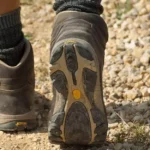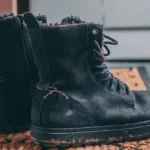Leather shoes are stylish and very functional and are the choice of footwear for many. But just like everything we use, wear and tear sets in. For leather, the wear and tear setting in may come in the form of cracks that disfigure the shoe and make you want to discard them.
Are you really upset with your cracked leather shoes? Don’t worry; you can fix your cracked leather shoes and boots at home. Let us show you how. Fixing cracked leather shoes and boots at home is generally a function of how well you can rid your shoes and boots of grime and dirt before you use materials like saddle soap and other leather cleaners to repair and restore the crevices in the leather.
What Causes Leather Shoes to Crack?
Leather shoes cracking have two main culprits for cracks.
(i) Pores
(ii) Dryness
Pores
Leather cracks in your shoes are caused by pores in the leather trapping dust and dirt and grime and oil, amongst other things. These things are irritants, and they discolor the leather and breakdown the leather’s normal texture, causing cracks.
Dryness
Just like our skin, if leather loses dryness, cracks appear. This occurs because leather has some moisture in it, and if exposed to dry environments or environs with low humidity levels, the lingering moisture in the leather will be gone, leaving cracks in its wake.
How to Fix Cracked Leather Shoes: Step by Step Guide
There are two kinds of fixes for cracked leather shoes & boots, regardless of leather texture;
i) Short term fix
ii) Repair for long term use
Short Term Fix
Using a short term fix for fixing the cracks in your leather shoes is useful for times when you are rushing and need to use your shoe.
To use the short term fix, you need about three to four minutes.
Step 1: Clean the shoes with a brush that has short, slightly stiff bristles. Using this brush will get out as much of the dust and dirt on your shoes as possible.
Step 2: Use a brush with soft bristles to touch your shoe polish (the polish should be the same color as the leather) and brush the polish into the leather. Do this evenly on your shoes, paying particular attention to the cracks and crevices. Build up polish there to hide it well.
Step 3: Dust the brush you used in Step 1 and use it to shine the polish on your shoes, doing so till you get an even sheen on both shoes.
You can now wear your shoes out, but make sure to repair your shoes properly when you have more time and aren’t rushing.
Repair & Restore for Long Term Use
Step 1: Clean the surface of the leather
Repairing your leather shoes is easy when the surface of the leather is clean. Use a brush to get rid of dust and grime, as they would impede the proper repair of your cracked leather shoes.
Step 2: Rub Saddle Soap into the leather
Saddle soap contains normal soap, softening agents like lanolin and also preservative agents, so they kind of have a 3-in-1 effect on your leather. Use a dauber to apply the saddle soap on your leather till the leather is clean and more flexible, then clean the soap with a piece of cloth and allow the shoe to dry.
Step 3: Fill out the shoe and apply mink oil on the shoe
The idea behind filling out the shoe first is to make sure that all the cracks in the shoe are visible and are stretched, so you can know the extent of each one. Fill your leather shoes with sock balls, newspaper or pieces of cloth. Make sure the shoes are well filled out and little to no space left in them.
Apply mink oil on the shoe or leather honey, focusing particularly on the areas with cracks. Rub them in till the cracks are barely visible.
The purpose of this is to put back some moisture into the leather.
Step 4: Condition the leather with shoe cream
Conditioning the leather with shoe cream will help make the color of your shoe uniform. Apply the shoe cream on your shoes, focusing on areas with cracks. This will make the already fading cracks to be even less visible, improving the overall aesthetics of your shoe and completing the fixing of your cracked leather shoe.
How to Repair Leather Shoes with Torn Leather
Cracks left unattended to in your leather shoe might become tears. So how do you repair leather shoes with torn leather?
The first thing to do is to clean the leather with a soft brush or a damp cloth. Then, use rubbing alcohol to clean all the areas the tear covers, and even around it.
Use a strong adhesive, preferably one made just for shoe repairs on both sides of the tear. Attach both sides of the tear in the way you want them to bind, taking care to not wobbly or crooked.
Allow about 24 hours for the glue to cure properly before wearing the shoes.
How to Restore Leather Shoes at Home
Restoring your leather shoes has to do with getting back the luster and polish that your leather shoes had when they were still new.
To do this, use the first three steps we explained in our step by step guide on fixing cracked leather shoes, minus the adding of mink oil. After this, apply your shoe polish to your leather shoes with a small cotton ball, rubbing in the polish gently and working with a small area at once.
Add a bit of water to the shoes to keep the moisture in as you build the polish into your shoes till you achieve the luster you want.
How to Prevent Leather Shoes & Boots from Cracking
Like we mentioned earlier, leather is treated animal skin, and just like every other skin, it needs moisture or it would dry out and start having cracks.
To prevent this, try to keep your shoes in areas with at least 45%humidity.
Polishing your shoes regularly is also a good practice to keep your leather shoes from cracking, as is applying mink oil or leather honey once in a while.
Conclusion
Using leather shoes and boots shouldn’t come with the fear of what to do when your shoes lose their luster or start getting cracks in them.
With our guide on how to fix cracked leather shoes and boots at home, you can now rest easy, knowing that you have the skills and knowhow to repair and restore your cracked leather shoes and boots by yourself and in your own house with a couple of easy to get materials.




